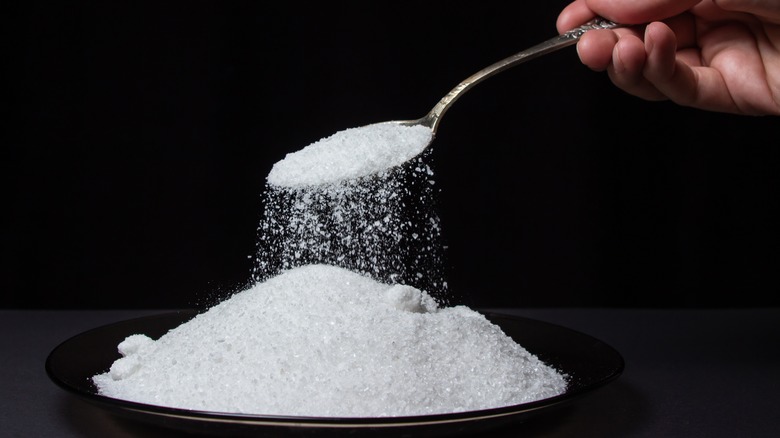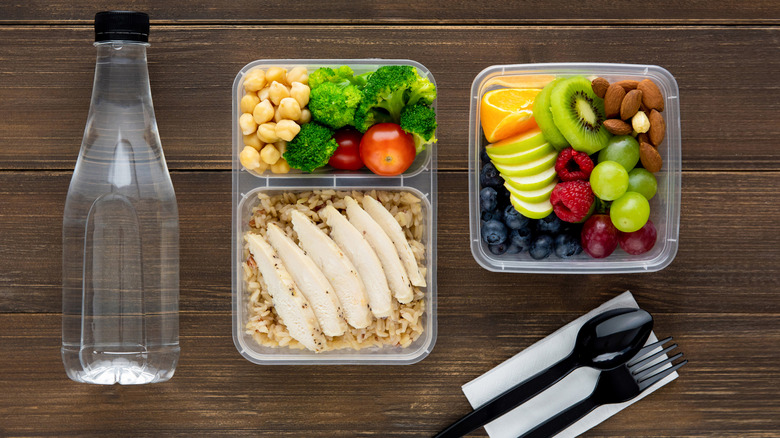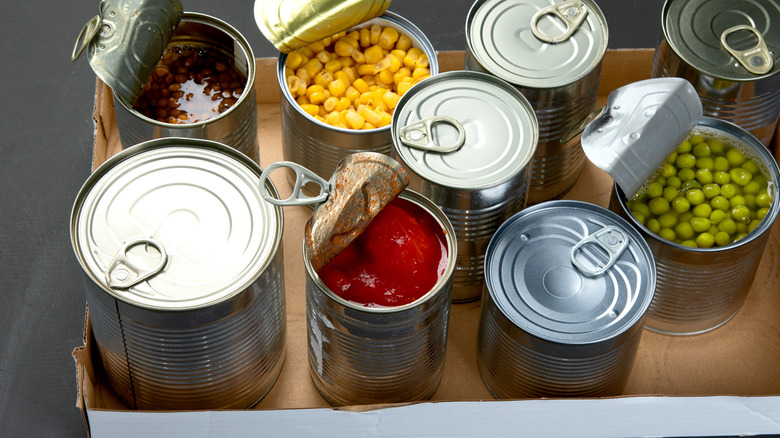Is There Much Of A Difference Between Low Sodium And Reduced?
Salt is a commonly used flavoring for food that helps to work as a food preservative, aids the body in maintaining proper fluid balance, and enhances the color and texture of foods. Yet, too much of a good thing is a concern. Many people need to watch the amount of salt they consume due to various health conditions. The hard part is navigating food labels that often use various terms to describe the amount of sodium in each serving.
Many labels state the food is "low sodium" or "very low sodium." Some will say they are "unsalted," while others say they are "sodium-free." For those on a strict sodium restriction, paying close attention to the differences between these labels is essential. At the same time, most others don't have to worry too much about intricate measurements. The difference between low and reduced sodium may be minimal to most in this category.
The U.S. Food & Drug Administration shares that the daily recommended value (DV) for sodium for most people is 2,300 milligrams daily. The food product should be 5% of the DV or lower per serving to be considered low sodium. Reduced sodium is a food that contains at least 25% less sodium than what is found in the regular serving of the product. Here's how to break down what this could mean for you.
What is low sodium?
The term low sodium refers to foods with 140 milligrams or less per serving. (Make sure to read how many servings are in any product to get the right intake!) You may also see labels that reference very low sodium. This is a food that has 35 milligrams or less in a serving. You may also find foods labeled as salt or sodium free. That doesn't mean they have no salt in them, though. It means that they have under 5 milligrams of sodium per serving.
Also, note that this is very different from foods that state they are no-salt-added or unsalted. This does not mean the food is safe to use for those on a very low-sodium diet. Rather, it means the manufacturer did not add any additional salt during the processing and packaging of a product.
For example, a can of green beans may reference being unsalted, which doesn't mean they are naturally salt-free, but that the manufacturer simply didn't add any additional during the canning process. Look at the label closely to see how many milligrams are contained in each serving to better understand its content.
What is reduced sodium?
The term reduced sodium doesn't always translate into a product being no- or low-salt. Confused? This can be a tricky component of any food label. It simply means that the manufacturer reduced the amount of sodium in this particular product or recipe at a rate that is less than what was in the original. You may also see a product labeled light in sodium or lightly salted. This means the product has at least 50% less sodium than what is in the original product they manufacture, whereas reduced sodium is 25% lower.
For example, when comparing two cans of soup, the original may have 1,000 milligrams of sodium. One labeled as reduced sodium may contain 750 milligrams, at least 25% lower than the original product. One labeled lightly salted could contain 500 milligrams of sodium, or 50% lower than the original.
When in doubt, look at the nutritional label to get specific information about the sodium content in each product rather than relying on terms like "reduced" or "lightly." That's important because what's found in one brand could be much different than in another.


